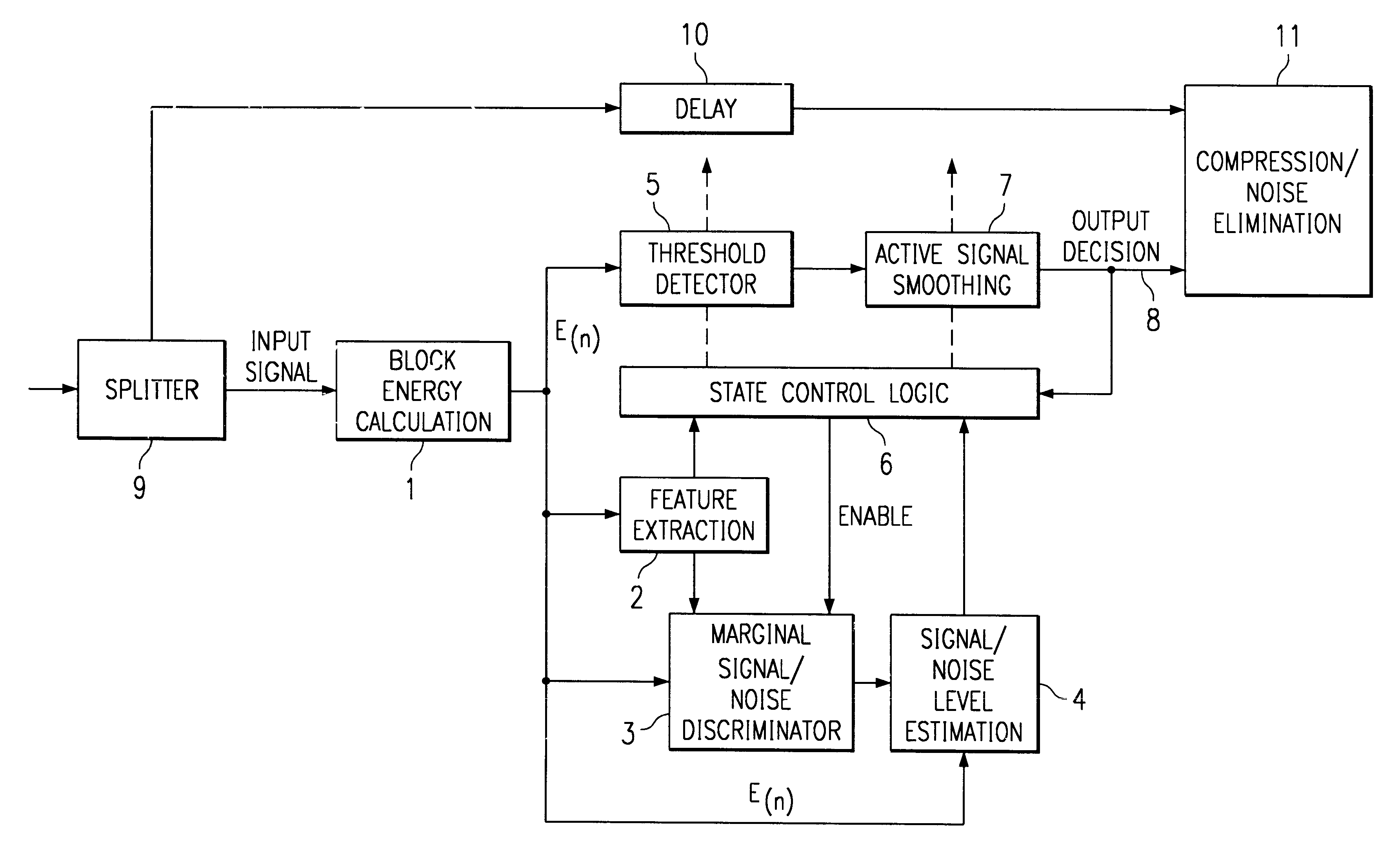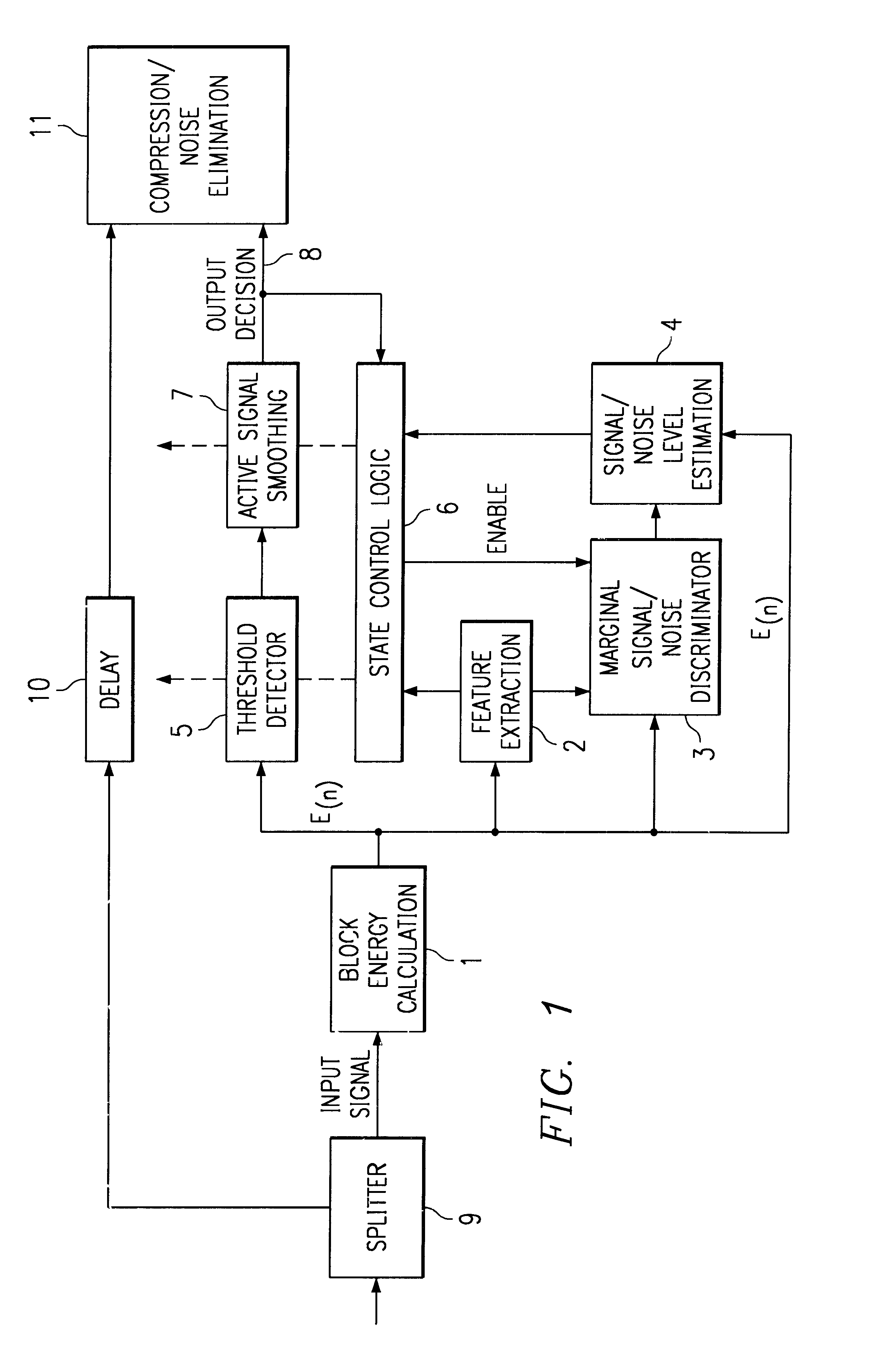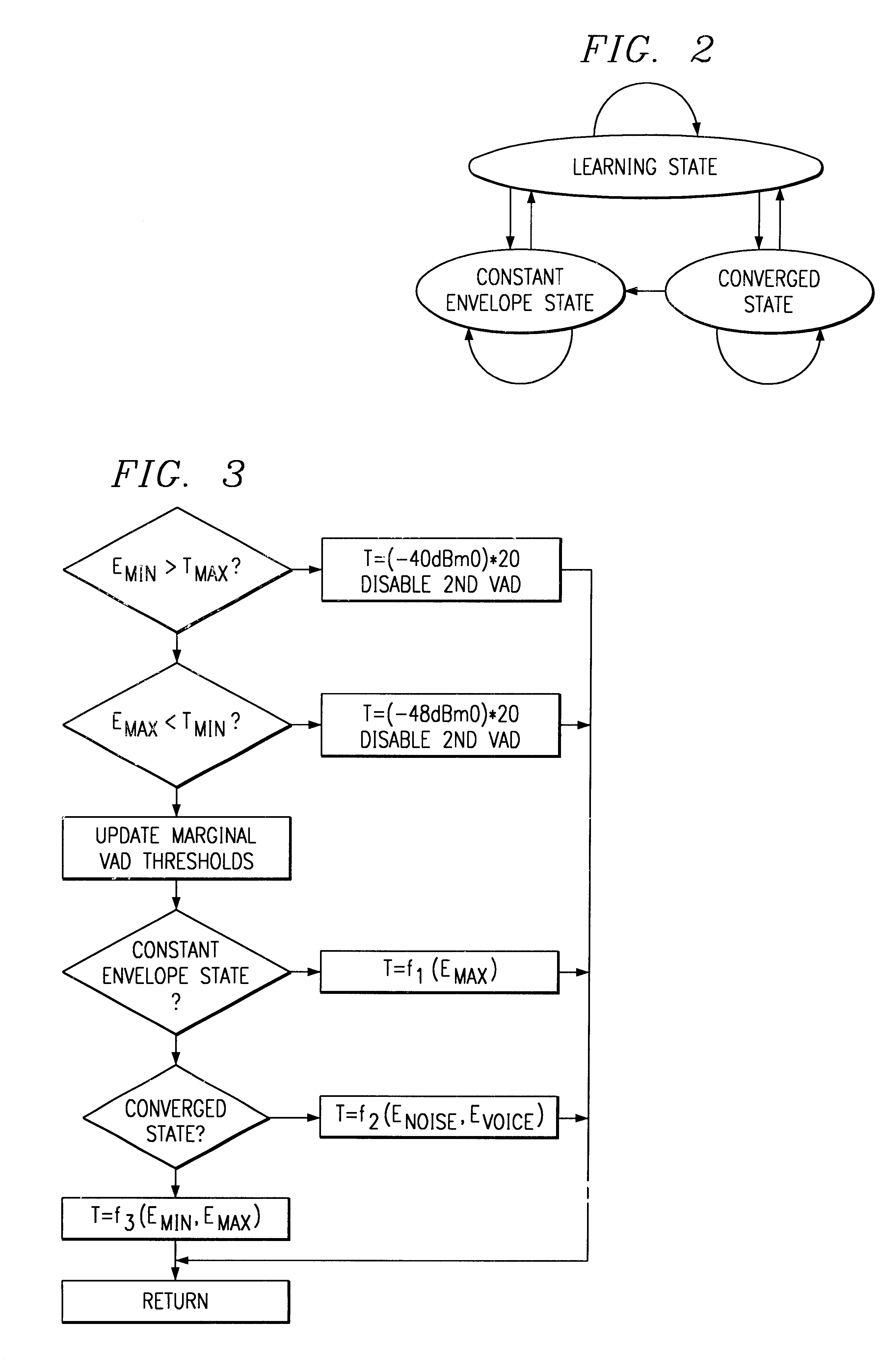Adaptive two-threshold method for discriminating noise from speech in a communication signal
a communication signal and discrimination method technology, applied in the field of methods for conserving bandwidth in the packet network, can solve the problems of complex algorithms, and high complexity of these methods
- Summary
- Abstract
- Description
- Claims
- Application Information
AI Technical Summary
Problems solved by technology
Method used
Image
Examples
Embodiment Construction
FIG. 1 is a block diagram illustrating an exemplary embodiment of the overall logic flow of the present invention. The signal from a source in a packet network passes through splitter 9 and is inputted into block 1 where the signal energy is calculated.
The signal energy is calculated using a block energy calculation technique where the input signal is partitioned into nonoverlapped 2.5 ms blocks. The 2.5 ms exemplary block size results in 20 samples / block, when an 8 kHz sampling rate is used. The block energy is calculated as a sum of sample squares or root-mean-square algorithm. The calculation can be performed according to a standard signal energy algorithm such as: ##EQU1##
for example, where: N=20 if 2.5 ms blocks are used and N=40 if 5 ms blocks are used.
Table I illustrates an exemplary typical result from the calculation of block energy. In the algorithm as implemented in an exemplary embodiment, the block length N =40 (samples of 5 ms), the threshold update period L=256 blocks...
PUM
 Login to View More
Login to View More Abstract
Description
Claims
Application Information
 Login to View More
Login to View More - R&D
- Intellectual Property
- Life Sciences
- Materials
- Tech Scout
- Unparalleled Data Quality
- Higher Quality Content
- 60% Fewer Hallucinations
Browse by: Latest US Patents, China's latest patents, Technical Efficacy Thesaurus, Application Domain, Technology Topic, Popular Technical Reports.
© 2025 PatSnap. All rights reserved.Legal|Privacy policy|Modern Slavery Act Transparency Statement|Sitemap|About US| Contact US: help@patsnap.com



